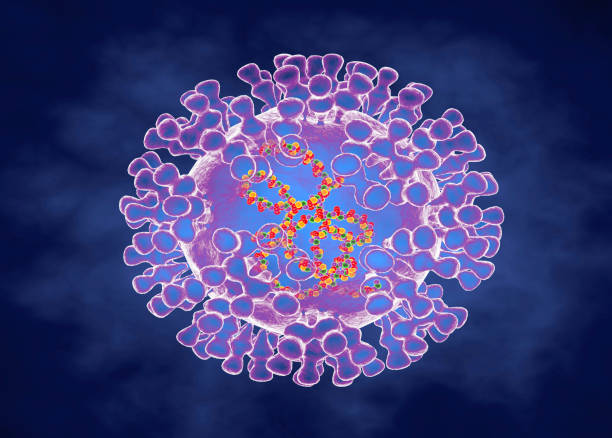
Monkeypox is a viral zoonotic disease caused by infection with monkeypox virus that occurs primarily in tropical rainforest areas of Central and West Africa and is occasionally exported to other regions. Monkeypox virus belongs to the Orthopoxvirus genus in the family Poxviridae.
The Orthopoxvirus genus also includes variola virus (which caused smallpox, an eradicated disease), vaccinia virus (used in the smallpox vaccine), and cowpox virus.
In endemic areas, monkeypox virus is thought to be maintained in nature through circulation among a number of susceptible mammals, namely wild rodents (including squirrels and rats), with occasional spill-over to non-human primates and humans.
Mpox (Monkeypox) is a viral zoonotic disease caused by infection with the monkeypox virus that occurs in animals primarily in tropical rainforest areas of Central and West Africa and is occasionally exported to other regions. The virus that causes the mpox disease belongs to the Orthopoxvirus genus in the family Poxviridae.
The Orthopoxvirus genus also includes variola virus (which caused smallpox, an eradicated disease), vaccinia virus (used in the smallpox vaccine), and cowpox virus.
In areas where mpox (monkeypox) is endemic in animals, the virus that causes mpox is thought to be maintained in nature through circulation among a number of susceptible mammals, namely wild rodents (including squirrels and rats), with occasional spill-over to non-human primates and humans.
The virus that causes mpox (monkeypox) has been reported in animals outside of endemic areas, in imported primates, and in pet prairie dogs (rodents of the genus Cynomys) where infection was initially introduced to North America through imported rodents.
More recently, infection with the virus that causes mpox was reported in a pet domestic dog (genus Canis) found in close proximity to infected humans.
Transmission of the virus that causes mpox can occur when a person or susceptible animal comes into contact with the virus from an animal, human, or materials contaminated with the virus. The virus enters the body through skin lesions (even if not visible to the naked eye), respiratory tract, or mucous membranes.The virus that causes mpox is transmitted from infected animals to humans or other susceptible animals by direct inoculation via bites, scratches or by direct contact with the body fluids and/or the meat of an infected animal during hunting and other activities involving susceptible animal species.Human-to-human transmission occurs mainly through close physical contact (e.g., face-to-face, skin-to-skin, mouth-to-mouth, mouth-to-skin contact including during sex). Ulcers, lesions or sores present in the mouth or throat can be infectious, meaning the virus can spread through saliva and respiratory droplets (and possibly short-range aerosols), in some cases. More studies are needed on whether the virus can spread from breathing and talking.
Human to animal transmission has been suspected in cases of pet dogs which had close contact with their owners who were symptomatic. The dogs showed mucocutaneous lesions and tested positive on PCR.
Various wild mammals have been shown to be susceptible to the virus that causes mpox. This includes rope squirrels, tree squirrels, Gambian pouched rats, dormice, non-human primates, among others. Although it may depend on the route of transmission and infectious dose, some species are asymptomatic, especially species suspected of being reservoirs (rodents). Other mammals, such as monkeys and great apes, show skin rashes similar to those experienced by humans.The infection that causes mpox has also been reported in pet prairie dogs (rodents of the genus Cynomys), which were initially infected by imported rodents, and most recently in a pet domestic dog (genus Canis) as a result of human to animal transmission.
WOAH is working with its experts and partners, such as WHO, to gather the latest scientific information and reports from the field. WOAH collates this information and shares it transparently with its members and the general public, aiming to help decision makers to make risk-based decisions considering the latest scientific evidence and avoid unnecessary barriers to trade.

